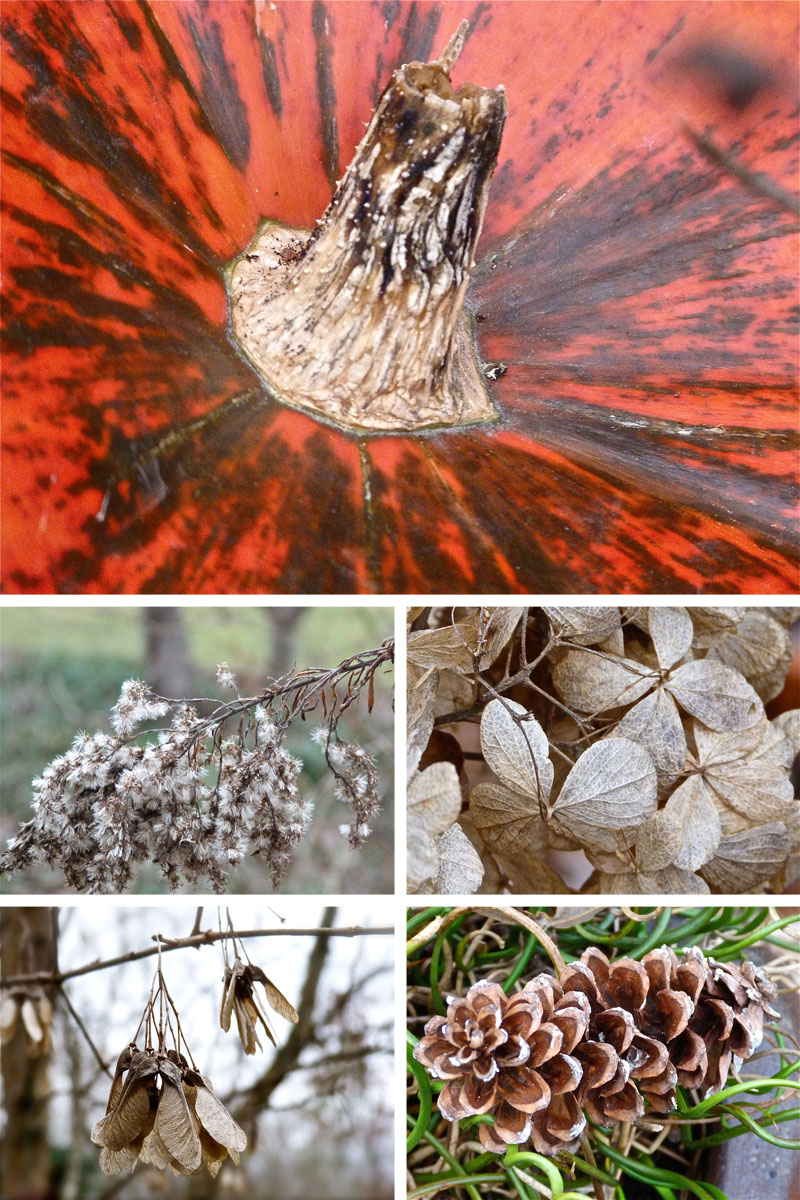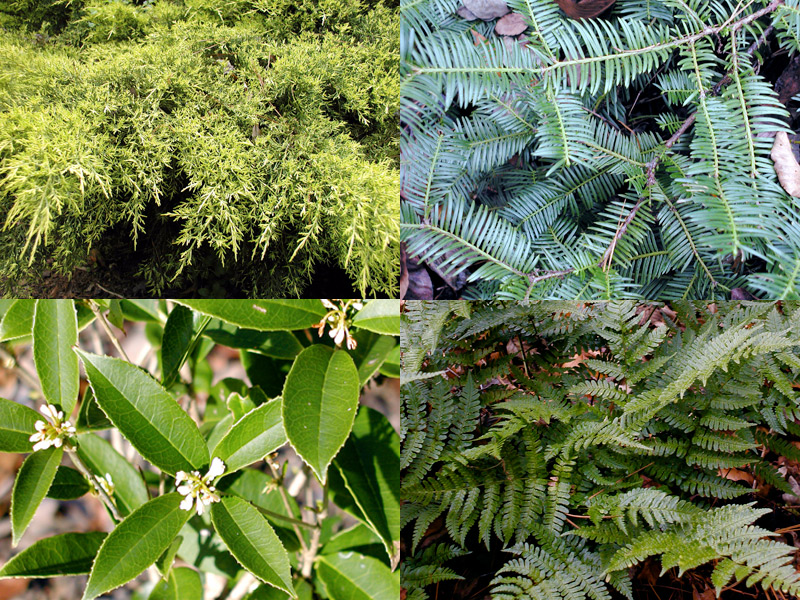Name the Season
 Thursday, December 29, 2011 at 5:00AM
Thursday, December 29, 2011 at 5:00AM Winters are wishy-washy here; one never knows what we will get. Within hours, bitter cold can be followed by spring-time temperatures. Warm gulf stream air and Canadian cold collide and fight for dominance, and neither wins for long. Plants are sometimes confused, like the people who keep a few summer sleeves in the closet along side heavy woolens.
And so it is in my garden, as 2011 comes to a close. We have had some frosts, but mild afternoons have persuaded some plants to start new growth. I hate to see it, for those tender shoots are doomed. Go back to sleep I say. You've hardly had a nap. But plants listen to rhythms other than my voice.
The garden is not colorless. In many ways it still looks like late fall. Crinkly piles of leaves are everywhere. A few colored ones cling to branches here and there, and evergreens brighten the landscape with various shades of green, sometimes tinted with gold, purple or red.Top photo above looks across the patio, while the middle photo is taken from the same spot, with the camera turned to look over the lady garden. Lower left is a portion of the drive, and lower right is the upper end of the hydrangea walk.
More color comes from rose hips and berries: Top photo is a rose hip. Berries shown clockwise from middle left: Ilex vomitoria (yaupon holly); Symphoricarpus doorenbosii 'Kordes' (Amethyst coralberry); Cornus florida (flowering dogwood); Ilex verticillata (common winterberry)On a cold, gray day I found bare branches, empty seed pods, and other signs of winter, but an orange pumpkin, three months old, still brightens the landscape where I set it after taking it and other parts of an autumn display out of the front planter. Its colors are striking, and I'm not willing to put it in the compost while it remains in good shape. I found signs of spring, too, as early daffodils push up from the earth.
Top photo is a rose hip. Berries shown clockwise from middle left: Ilex vomitoria (yaupon holly); Symphoricarpus doorenbosii 'Kordes' (Amethyst coralberry); Cornus florida (flowering dogwood); Ilex verticillata (common winterberry)On a cold, gray day I found bare branches, empty seed pods, and other signs of winter, but an orange pumpkin, three months old, still brightens the landscape where I set it after taking it and other parts of an autumn display out of the front planter. Its colors are striking, and I'm not willing to put it in the compost while it remains in good shape. I found signs of spring, too, as early daffodils push up from the earth.

Winter blooming camellias provide spots of color. There is beauty even in the fallen ones, I think. I am pleased with my fall vegetable garden, and I have discovered that growing food this time of year is easier than struggling to keep vegetables alive through a bug infested, disease ridden, hot and dry summer. But I am not a vegetable gardener, as the broccoli in the collage below testifies. Lou told me days ago that we had broccoli to pick, but in the busyness of the season, I forgot about it. Today I was horrified to discover that some of it had started to flower! Fortunately, there was plenty still good to pick, but I felt bad that I had neglected it.
I am pleased with my fall vegetable garden, and I have discovered that growing food this time of year is easier than struggling to keep vegetables alive through a bug infested, disease ridden, hot and dry summer. But I am not a vegetable gardener, as the broccoli in the collage below testifies. Lou told me days ago that we had broccoli to pick, but in the busyness of the season, I forgot about it. Today I was horrified to discover that some of it had started to flower! Fortunately, there was plenty still good to pick, but I felt bad that I had neglected it.Top photo is decorative cabbage which borders the vegetable patch. Non edible, but I want even this utilitarian area to be pretty! Lower shots are of my neglected broccoli and swiss chard, which has flourished in spring, early summer, fall, and now early winter. Frost has not bothered it.What season are you in? Here is whatever you name it. My garden has a little of it all, with surely some surprises waiting around the corner in 2012.
Happy winter gardening!
 Permalink
Permalink  berries,
berries,  seed pods,
seed pods,  vegetable garden,
vegetable garden,  winter,
winter,  winter landscape,
winter landscape,  winter sky in
winter sky in  winter garden
winter garden 
